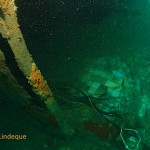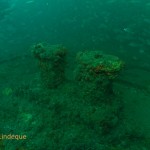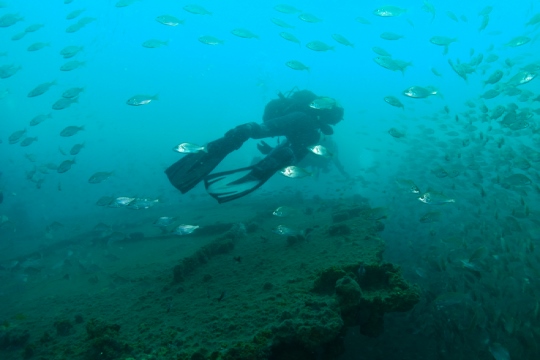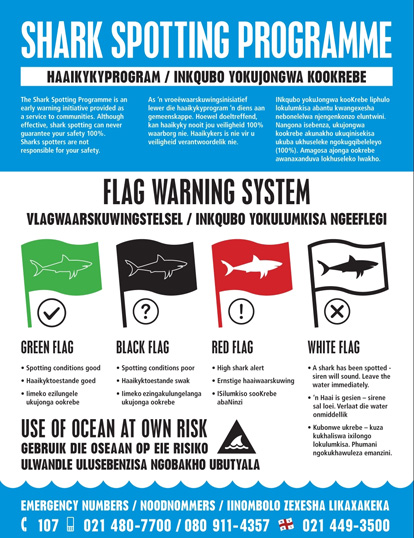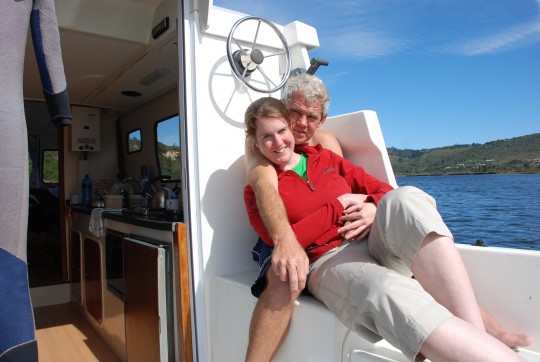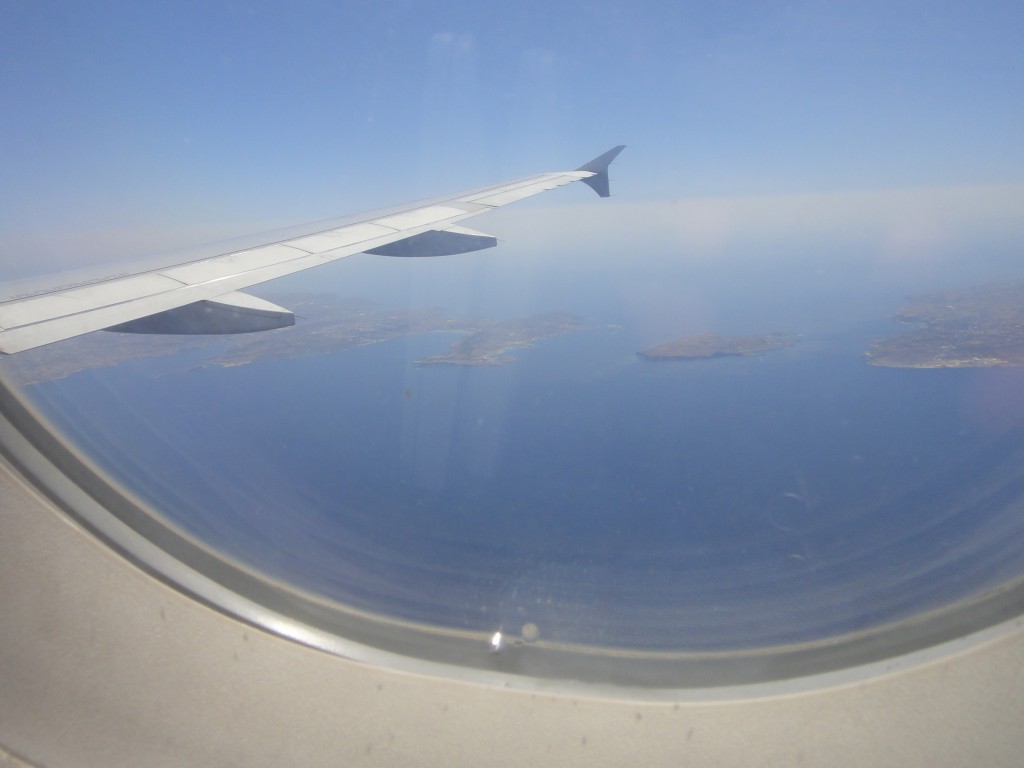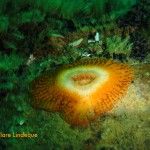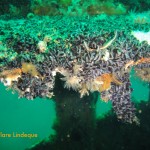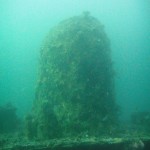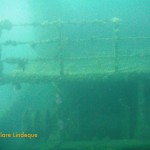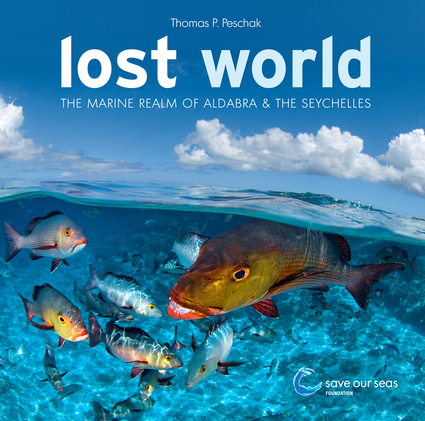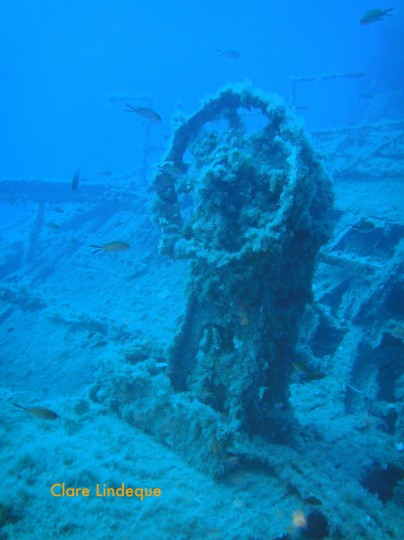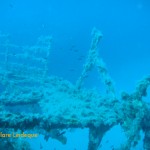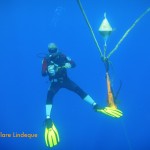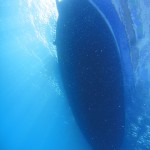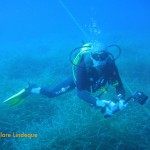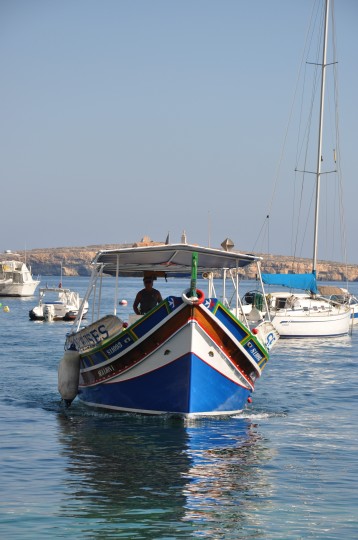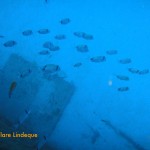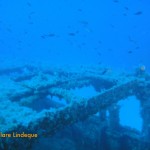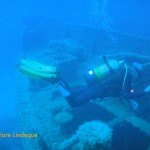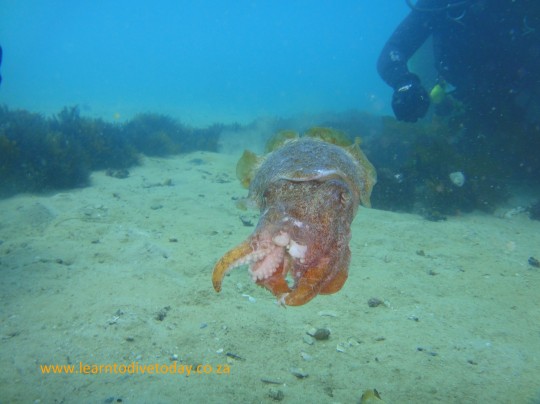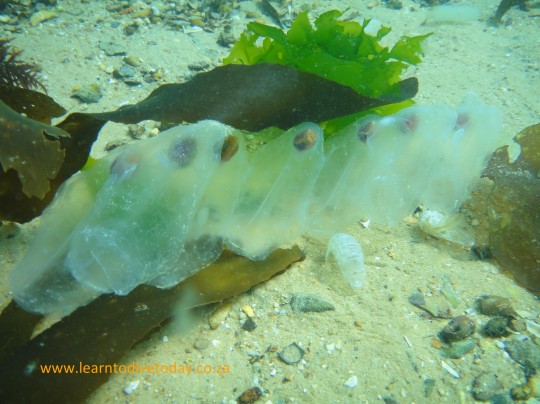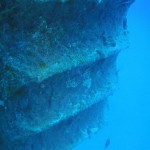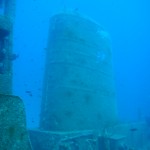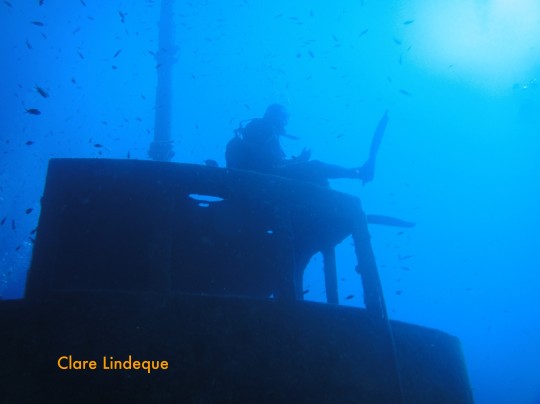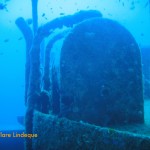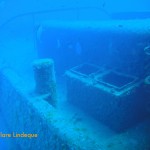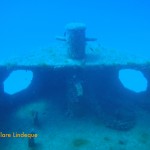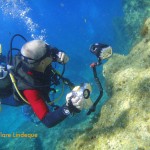One of the most spectacular shipwrecks I’ve ever seen was that of the 100 metre long unmanned barge Margaret, which ran aground at Jacobsbaai on the West Coast on 24 June 2009. Margaret was carrying two halves of a floating dry dock and twelve river barges (positioned atop each other in side by side pairs, with two rows of three at the bottom). She was under tow by the tug Salvaliant from the Chinese shipyard where everything was manufactured, to Rotterdam. The barges were destined to transport cargo up and down the navigable rivers in Europe. During a winter storm, the tow parted, and Margaret and her cargo ran hard aground on the rocky reef just outside Jacobsbaai.

Salvaging the barges proved to be an almost intractable problem, so Margaret was still sitting firmly a couple of hundred metres off the beach when Tony and I visited six months after her grounding, in late December 2009. The stack of barges and two halves of a floating dry dock (the blue parts of the structure in the images) was clearly visible from a great distance. The sight was even more incongruous than that of the Eihatsu Maru aground on Clifton beach, which was a wreck-lover’s dream (but unfortunately not a permanent arrangement).
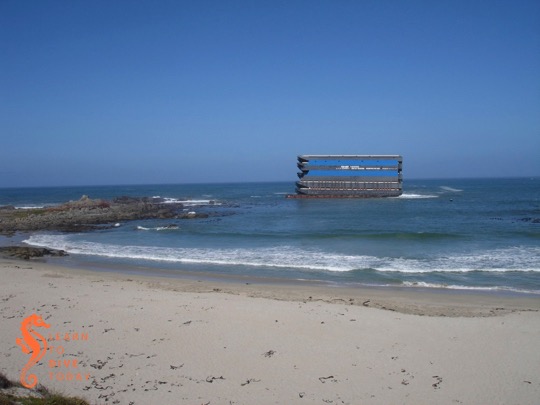
I wish I’d taken a picture of what the wreck looked like as we drove down the hill into Jacobsbaai, but you can see one here if you scroll around a bit. It looked like an office block rising out of the ocean. The wreck was so large that it was visible from almost every point in the sleepy town, and the brain struggled to make sense of the sight. It’s clear from the images what a challenge it must have been to tow the barge in the wind, as the forty to fifty metre high, perfectly flat sides of the stack must have provided tremendous resistance in a gale.

The owner ran out of money to continue salvage in February 2010, and Margaret was becoming increasingly damaged and unstable as time passed. The risk of the upper barges coming loose during another storm, and drifting away to cause a hazard to other ships or coming ashore on the beach, was great. It was decided by SAMSA to persist with an attempt to reduce the wreck, at taxpayers’ expense. Any money obtained by selling off the salvageable barges would go towards defraying costs.

Salvage
Tony and I visited the wreck again in April 2010, after the demolition that freed six of the topmost barges. The seaward wall of the upper piece of floating dry dock, weighing 91 tonnes, had been cut away to allow the barges to slide off freely.

Over two tons of explosives were used in total. Small (125 kilogram) explosive charges were set off one after the other to create a ripple effect that dislodged the top six barges. These were towed to Saldanha, and then sold.

If you like reading court judgments, here’s one in which the owners of the barges attempt to claim damages (massive ones) from the owners of the tug Salvaliant. There’s also a great collection of photos of the wreck in her various incarnations here.

In late April 2012, Tony snapped this lucky shot of two of the barges leaving Simons Town harbour under tow. They’d been moored against the harbour wall for at least a month, to the consternation and fascination of the local paddling community.

The remains of Margaret and her cargo were further demolished down to sea level and below, and now comprise an artificial reef. Fortunately there was no fuel or other pollutants in the stack of barges, which made the process significantly less polluting than it might otherwise have been.
The barge Margaret today
Tony and I visited Jacobsbaai to check out what remains of Margaret and her cargo in September 2018. The path to the wreck, which was formerly blocked off by hazard tape and “salvage in progress” signs, is wide and easily walkable. One can go right up to the rocks and view the wreckage from reasonably close up. Watch your foothold here, as it can be slippery and the rocks aren’t all firmly packed.
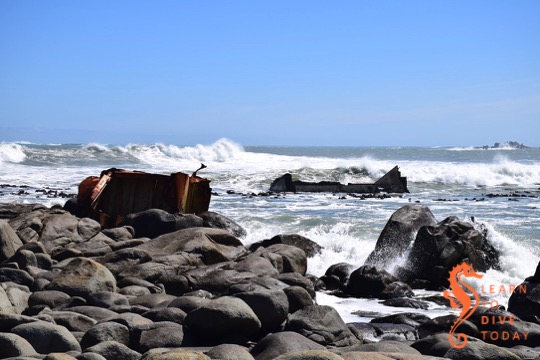
Look out for a small memorial to one of the salvors, who passed away in an accident on the wreck during the course of the salvage operation.

Parts of the wreck look like shark fins in the water, and it is possible that even more of it is visible at low tide.

You can find the wreck by turning off the R399 towards Jacobsbaai, and continuing towards the coast until the road becomes gravel. Carry on this road, and when you reach a T junction take a right turn to circle around the tiny, sheltered bay in front of you. When you can’t drive any more – there will be a small housing development in front of you – park the car and either walk up the steps on the dune to get onto the beach, or, preferably, through the houses. The paved area will give way to a wide gravel path that the salvors used to access the wreck. Continue straight along it and you’ll soon spot the wreckage on the rocks ahead and to your right. Co-ordinates are approximately -32.964140, 17.881612.

If you’re interested in visible shipwrecks, check out my ebook Cape Town’s Visible Shipwrecks, and this post.















